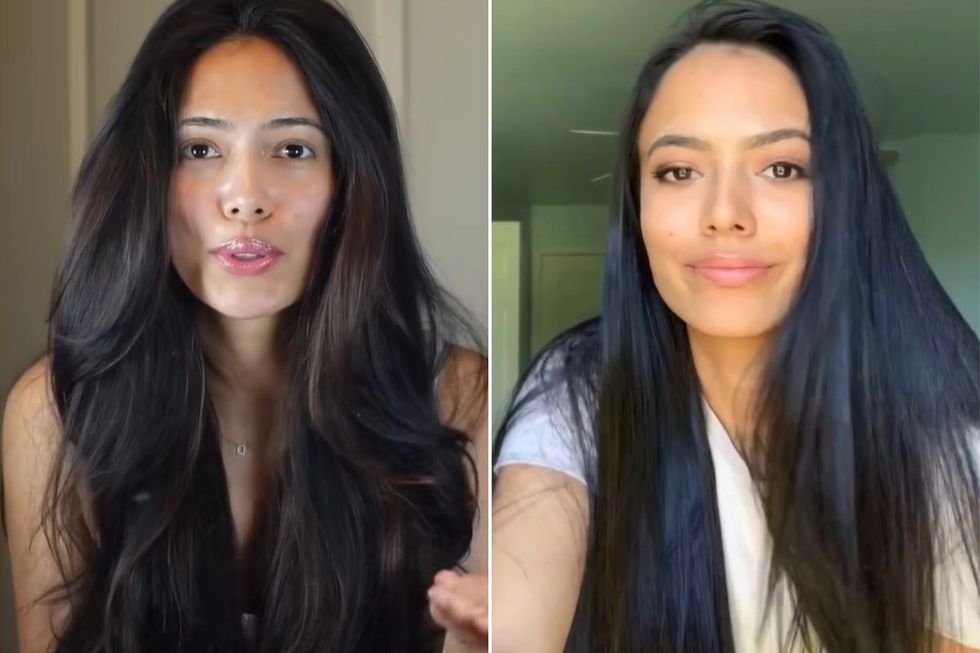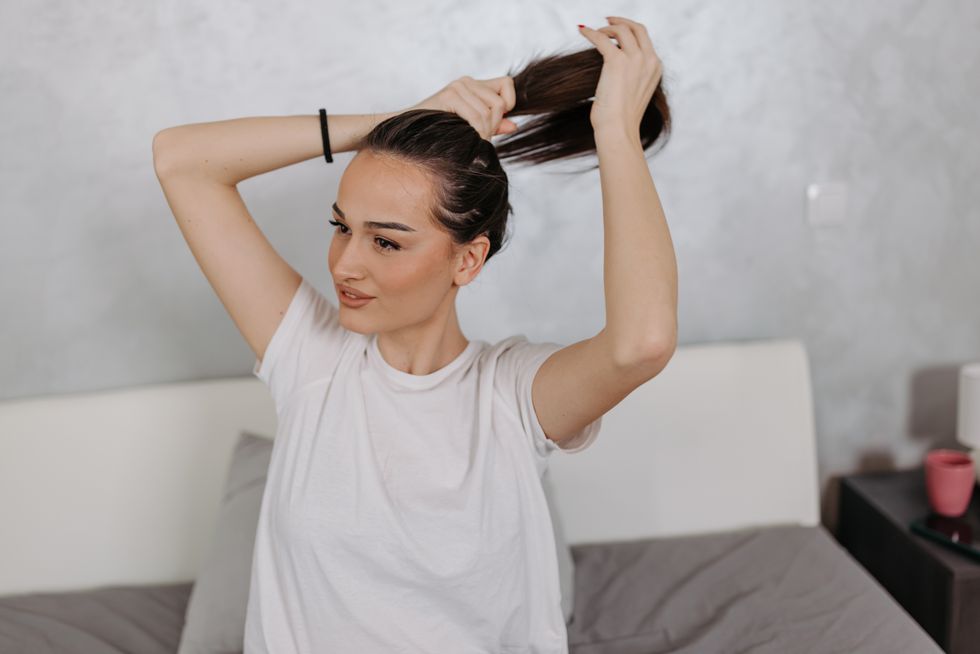'I grew back my hairline and reversed thinness by changing hairstyle - people say I have their dream tresses'

Hair loss can be disheartening, but with the right tips and tricks, it's possible to see major improvements
Don't Miss
Most Read
Latest
The desire for thick, luscious locks is one that many women share, particularly those who experience hair loss.
Factors such as genetics, age, hair care, hormonal imbalance, stress, and medication can all cause the condition, but many forms are reversible if you know the right techniques.
Content creator Dahiana Fernandez (who goes by @edelydesigns on TikTok) revealed that she was able to "grow back her hairline" after thinning.
One of the ways Dahiana made a major transformation was by ditching damaging hairstyles.
The hair care enthusiast admitted that she used to be a big fan of "super tight hairstyles", such as high ponytails.
Sleeked, slicked-back hairdos often cause headaches, but worryingly, Dahiana wore them so often that she became "numb" to the pain.
Nowadays, Dahiana either wears her hair down or loosely in a claw clip to avoid putting stress on her strands.
At the gym, where a tighter hairstyle may be more necessary, she secures her ponytail tightly but makes sure the hair at the scalp is not pulled too hard.

'I grew back my hairline and reversed thinness by changing hairstyles'
|TikTok/@edelydesigns
Hair experts frequently warn against hairstyles that pull the strands, with the American Academy of Dermatology Association (AAD) confirming that they "can lead to hair loss".
They explained: "A sleek ponytail, cornrows, tightly pulled updo, or head covering can help you express your style, and look and feel great. However, these styles also constantly pull at and damage the health of your hair.
"Over time, the pulling can lead to hair loss. The medical term for this type of hair loss is traction alopecia."
Hair gurus at the AAD cautioned that "anyone who wears tight hairstyles or puts repeated stress on their scalp can get traction alopecia".
LATEST DEVELOPMENTS:

'Over time, pulling can lead to hair loss'
|GETTY IMAGES
However, some people experience it more than others because tight hairstyles are common in their culture or profession. Experts at the AAD compiled a list of hairdos that may put you at risk.
Which hairstyles can lead to traction alopecia?
When the following hairstyles are too tight, they can cause traction alopecia:
- Cornrows
- Locs
- Tightly braided hair
- Buns, ponytails, and up-dos that are tightly pulled
- Hair extensions or weaves, especially on relaxed hair
- Styles that require rollers worn to bed most of the time
The AAD said: "The constant rubbing of a hat, head scarf, or other hair covering over the hair can also lead to traction alopecia, especially if you pull your hair back tightly before covering it.
"If you're of African descent, the shape of your hair follicles makes your hair more likely to be damaged from rough or tight hairstyles."
The experts warned that some forms of hair loss - including traction alopecia - can become permanent when left untreated for a long time.
Visiting a dermatologist is your best course of action if you want to "halt" hair loss, as these professionals can provide expert-approved treatments like corticosteroids, antibiotics, minoxidil, and hair restoration procedures.
But to prevent long-term hair loss, it's wise to loosen up your hairdos, switch your styles regularly so your hair can recover, and follow precautions when wearing a weave.
Of course, wearing tight hairstyles on occasion is not the end of the world, but it certainly shouldn't be a habit.
Hair care enthusiasts should watch out for pain, stinging, crusting, and tenting (sections of your scalp pulled up like a tent), and if they notice this, they should change hairstyles immediately.
As well as avoiding tight styles, Dahiana improved her locks by resisting the urge to pick at her scalp when she suffered from acne or dandruff.
She also used a daily hair serum, defined by L'Oréal as a "liquid-based treatment usually formulated using silicones that provide a protective layer over the hair fibre, assisting in smoothing frizz".
The experts added: "It's not common knowledge, but hair serum isn't just used to tame frizz. The right serum for your hair type can address multiple concerns, from smoothing the hair, adding shine, and detangling to repairing damage and protecting from pollution. Hair serum is also a good way to hide split ends in between visits to the hairdresser."
Dahiana's handy hacks clearly worked, with followers leaving enthusiastic comments. One gave the ultimate praise: "You have my dream hair." Another said: "Your hair is gorgeous."










